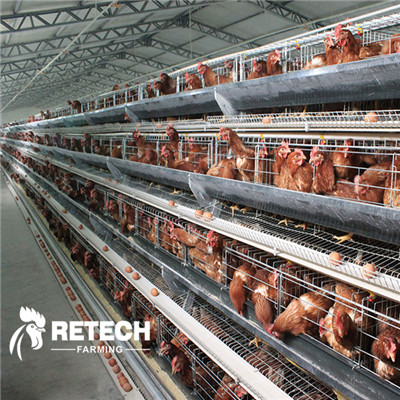In order to ensure that laying hens produce more eggs, chicken farmers need to supplement light in time. In the process of filling light for laying hens, the following points should be paid attention to.
1. Reasonable application of light and color
Different light colors and wavelengths have different effects on laying hens. Under the same conditions of other feeding conditions, the egg production rate of hens raised under red light is significantly higher than that of laying hens under other colors of light, which can generally be increased by about 10% to 20%.
2.The duration is stable and appropriate
Supplementary light for laying hens generally starts from 19 weeks of age, and the light time should be from short to long, and it is advisable to increase it by 30 minutes per week. When the daily light time reaches 16 hours, stable light should be maintained, and the duration should not be short. The best way is to supplement the light once a day in the morning and evening.
3. The light intensity is uniform and suitable
For normal laying hens, the required light intensity is generally 2.7 watts per square meter. In order to make the bottom layer of the multi-layer cage chicken house have sufficient illumination, the illumination should be increased in the design, generally 3.3~3.5 watts per square meter. Therefore, 40-60 watts of light bulbs should be installed in the chicken house. Generally, the height of the lights is 2 meters, and the distance between the lights is 3 meters. If more than 2 rows of bulbs are installed in the chicken house, they should be arranged in a cross manner. The distance between the bulbs against the wall and the wall should be half of the distance between the bulbs. Attention should also be paid to replacing damaged bulbs at any time. Wipe the bulbs once a week to keep the house in place. suitable brightness.
Avoid suddenly turning on or off the lights when it is dark or bright, which will disturb the chickens and cause stress reactions. The lights should be turned on and off when it is not dark or when the sky has a certain brightness.
The reason why light affects the egg production rate of chickens
In the early spring, the sunshine time is shortened, and the effect of light on the chicken body is reduced, which reduces the secretion of gonadotropins in the anterior pituitary gland of the chicken, resulting in a decrease in the egg production rate of the chickens.
Methods of providing artificial lighting
Generally, artificial light is provided when natural light is less than 12 hours, and it is supplemented to about 14 hours of light per day. To supplement the light, it is better to turn on the lights twice a day, that is, turn on the lights at 6:00 in the morning until dawn, and turn on the lights at night until 20-22:00, and the time of switching lights does not need to be changed every day. When supplementing the light, the power supply should be stable. It is appropriate to use about 3 watts of light per square meter in the house. The lamp should be about 2 meters away from the ground, and the distance between the lamp and the lamp should be about 3 meters. The device should be placed under the bulb.
Appropriate light time for chickens
After the chickens start production, the suitable light time should be 14 to 16 hours a day, and the illumination should be about 10 lux (equivalent to 2 meters above the ground, and 1 watt of light per 0.37 square meters). The light time cannot be changed arbitrarily, especially in the late stage of egg laying, it is even less suitable to reduce the light intensity or shorten the light time, that is to say, the light can only be increased, not decreased, otherwise the egg production rate will be greatly reduced.
Precautions
For chickens with poor health, poor development, light weight, and less than 6 months of age, artificial light supplementation is generally not carried out, or supplementation is delayed for a period of time, otherwise the purpose of increasing egg production rate will not be achieved, even if A temporary increase will soon lead to premature aging, but it will reduce the egg production rate throughout the year.
Post time: Jul-22-2022









